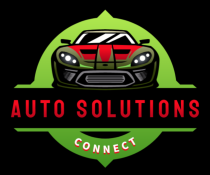Common car knowledge

Whether you are a new or experienced driver, having a solid understanding of your car is key to preventing problems, saving money, and staying safe on the road. This involves everything from routine maintenance to being prepared for unexpected emergencies.
Essential car maintenance
- Know your owner’s manual. This is the ultimate guide to your specific vehicle. It contains important information about maintenance schedules, tire pressure, fluid specifications, and what all those dashboard lights mean.
- Keep an eye on fluids. Your vehicle relies on various fluids to operate correctly. Check these regularly, either weekly or monthly:
- Engine oil: Use the dipstick to check that the oil level is between the minimum and maximum markers. The oil should look amber and clean, not dark or gritty.
- Coolant: This prevents your engine from overheating. Ensure the engine is cool before checking the translucent reservoir, where the fluid level should sit between the ‘min’ and ‘max’ lines.
- Windshield washer fluid: This is easy to top off and vital for clear visibility.
- Brake fluid: A sealed system that should not drop suddenly. If it does, a mechanic should inspect it for a leak.
- Manage your tires. Proper tire pressure and tread are crucial for safety and fuel efficiency.
- Check pressure: Check your tire pressure monthly when the tires are cold. The recommended PSI can be found on a sticker inside the driver’s door.
- Inspect tread: Use a tread depth gauge or the “20p test” to ensure your tread is not below the legal limit.
- Rotate tires: Have your tires rotated at regular intervals to promote even wear and extend their lifespan.
- Listen to your brakes. Squealing or grinding sounds and a vibrating brake pedal are signs that your pads may be worn and need to be replaced.
- Test your battery. Most car batteries last 3–5 years. Signs of a weakening battery include slow engine cranking or dimming lights.
Understanding dashboard warnings
Dashboard symbols alert you to potential issues, with their color indicating the severity.
- Red lights: Indicate a serious, potentially dangerous issue that requires immediate attention. Pull over safely as soon as possible.
- Yellow/Orange lights: Suggest something needs to be checked or serviced soon, but is not immediately critical.
- Green/Blue/White lights: Indicate that a system is active or operating normally, such as your headlights or cruise control.
Safe driving practices
- Eliminate distractions. Never use your phone or adjust controls while driving. Focus all your attention on the road.
- Wear your seatbelt. This is the most effective safety measure for preventing injury in a crash.
- Practice defensive driving. Always be aware of your surroundings, scan the road ahead, and maintain a safe following distance.
- Obey traffic laws. Stick to the speed limit and follow all traffic signs and signals.
What to do if you break down
If your car stops working on the road, follow these steps to stay safe:
- Pull over safely. If possible, move your vehicle to the side of the road, away from traffic.
- Turn on your hazard lights. This alerts other drivers to your situation.
- Use reflective triangles. Place warning triangles behind your car if you can do so safely.
- Stay in your vehicle. If you are safely off the road, remain inside with your seatbelt on and doors locked while you wait for help.
- Call for assistance. Use your phone to contact roadside assistance or a tow truck.


Leave a Reply
You must be logged in to post a comment.